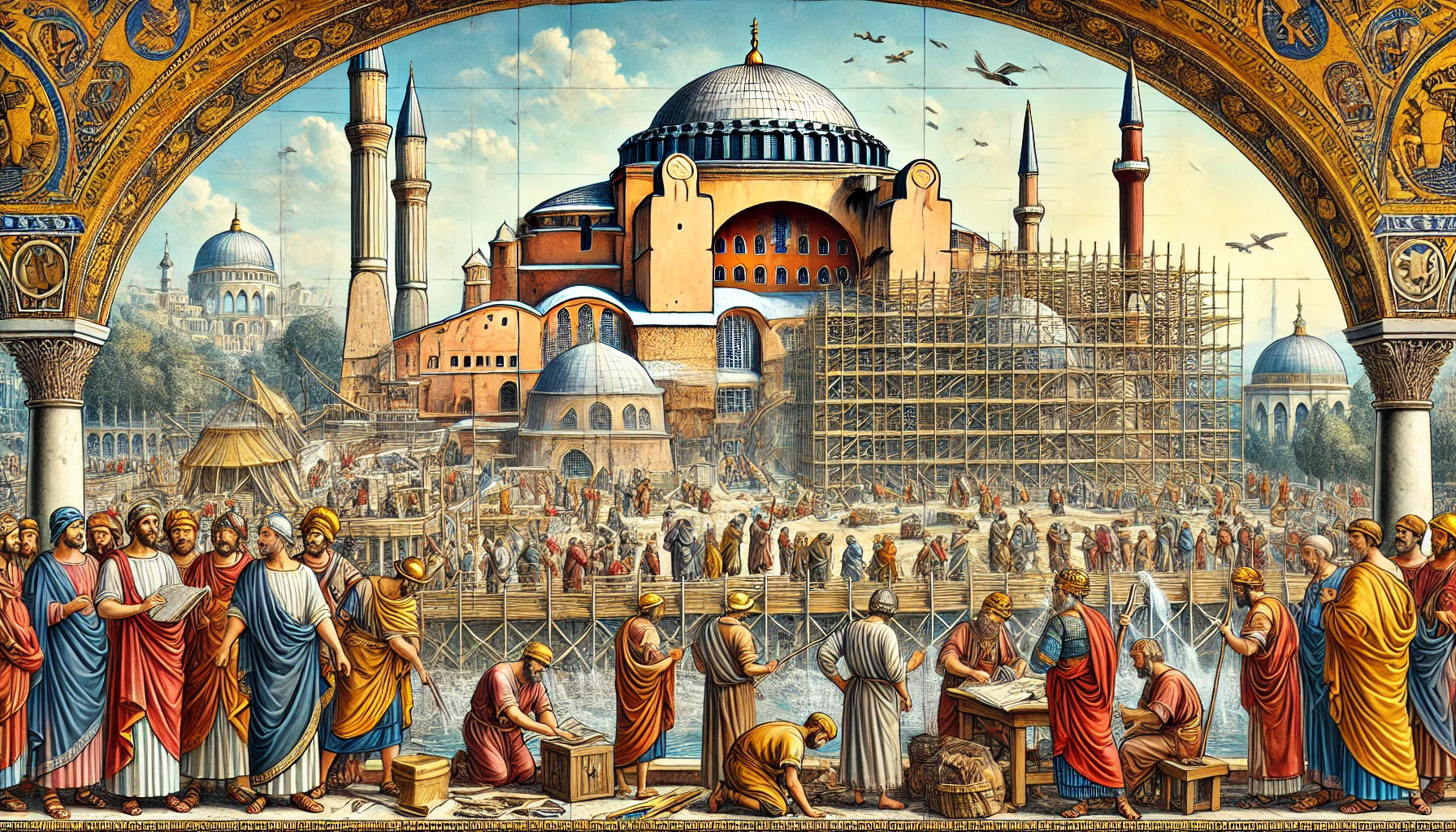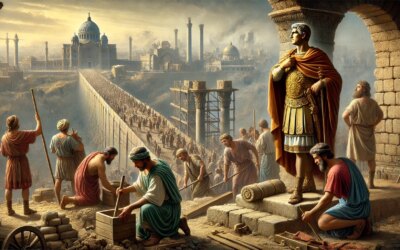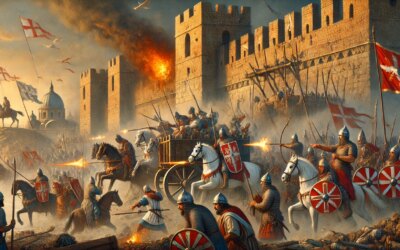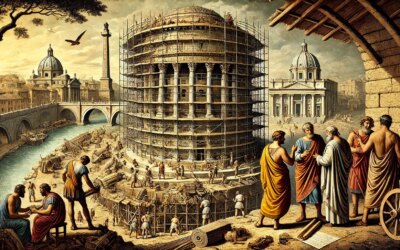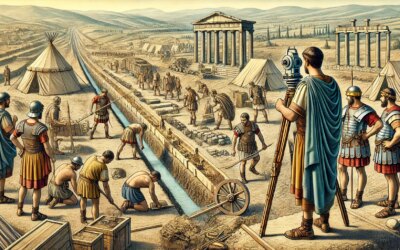The Vision of Justinian I: A Monument to Faith and Power
In 532 AD, Emperor Justinian I faced a crisis that threatened to unravel his reign. The Nika Riots had devastated Constantinople, leaving much of the city, including its most important church, in ruins. Determined to restore order and demonstrate the might of the Byzantine Empire, Justinian embarked on an ambitious project: the construction of the Hagia Sophia, a basilica that would redefine architectural grandeur.
The Need for a New Basilica
The Hagia Sophia had already undergone two previous constructions, both of which had been destroyed—first by riots in 404 AD and then again in 532 AD during the Nika Revolt. Justinian saw an opportunity not just to rebuild but to create something unparalleled in scale and beauty. He envisioned a structure that would glorify Christianity, assert his divine authority, and serve as the heart of Orthodox worship.
Architectural Innovation and Engineering Marvel
To bring his vision to life, Justinian enlisted two of the most skilled architects of the time, Anthemius of Tralles and Isidore of Miletus. Unlike traditional basilicas, which relied on thick walls for support, the Hagia Sophia incorporated a revolutionary system of domes and semi-domes. The central dome, spanning 31 meters (102 feet), seemed to float above the vast interior, supported by pendentives—an innovative engineering solution that distributed the weight across massive piers.
The construction process was rapid by ancient standards. In just five years, between 532 and 537 AD, thousands of laborers worked tirelessly to complete the basilica. Materials were sourced from across the empire—marble from Egypt, porphyry from Rome, and green stone from Thessaly—symbolizing the vast reach of Justinian’s rule.
The Magnificent Interior
Inside, the Hagia Sophia dazzled visitors with its lavish decoration. Golden mosaics adorned the vast domes, reflecting natural light that streamed through strategically placed windows. The columns and capitals displayed intricate carvings, blending Greco-Roman, Christian, and Eastern influences into a singular masterpiece.
Upon its completion, Justinian is said to have stood in awe before the altar and declared, “Solomon, I have surpassed you,” referencing the legendary grandeur of the Temple of Solomon in Jerusalem.
Religious and Political Symbolism
The Hagia Sophia was more than just a place of worship; it was a symbol of Justinian’s authority and the unity of church and state. As the center of Eastern Orthodox Christianity, it hosted imperial coronations and religious ceremonies that reinforced the emperor’s divine right to rule.
Its influence extended beyond Byzantium. The building inspired Islamic and Western European architecture for centuries, most notably in the design of the Ottoman mosques that would later define Istanbul’s skyline.
The Hagia Sophia Through the Centuries
Over the following centuries, the Hagia Sophia underwent multiple transformations. In 1453, after the Ottoman conquest of Constantinople, Sultan Mehmed II converted it into a mosque, adding minarets and covering Christian mosaics with Islamic calligraphy. In 1935, the Turkish government secularized the building, turning it into a museum. Most recently, in 2020, it was reconverted into a mosque, yet it remains one of the most visited and historically significant sites in the world.
A Legacy of Innovation and Influence
The Hagia Sophia stands as a testament to Justinian’s ambition, vision, and the architectural brilliance of the Byzantine Empire. More than just a building, it represents the fusion of cultures, engineering ingenuity, and the enduring power of faith. Nearly 1,500 years after its construction, it continues to captivate and inspire, a monument to an emperor’s dream that still touches the heavens.

